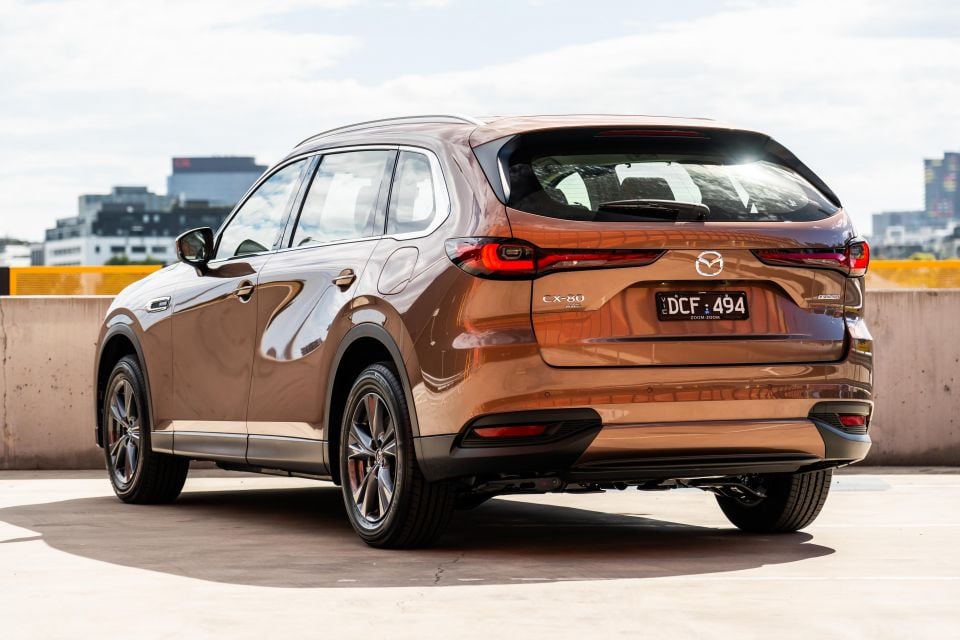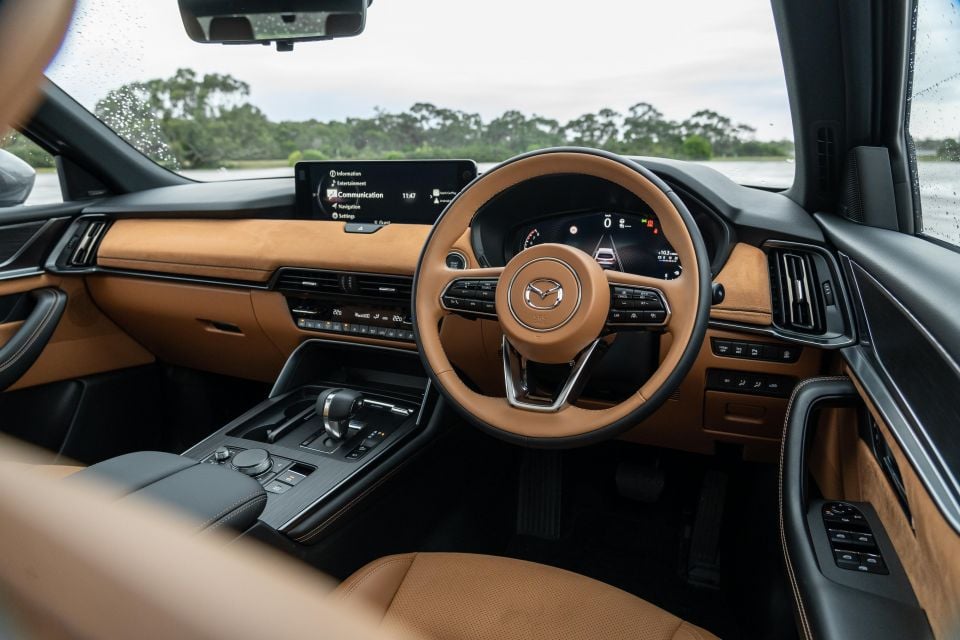Though customers haven’t flocked to Mazda Australia’s new fleet of large, premium SUVs in the way the brand had hoped, it’s confident it can still offer a similar experience while cutting local pricing.
Australia is Mazda’s only major international market to receive all four SUVs on the brand’s Large Architecture: the CX-60, CX-70, CX-80, and CX-90.
The CX-60 has just received an update to address ride complaints, while also having its price cut by up to $5560 across the board, while new, cheaper variants have slashed the base price to $50,240 before on-roads – and even cheaper, four-cylinder grades will reduce that even further.
Similarly, Mazda brought CX-90 prices down by between $6000 and $7000 earlier this year, while the CX-80 was launched last year with a base price of $54,950 before on-roads, undercutting the smaller CX-60 at the time.
Despite that, Mazda Australia managing director Vinesh Bhindi says the plan with its original pricing strategy wasn’t just to become a premium brand.
“Our objective wasn’t only to reposition, it was to expand from where we were,” he said.
Hundreds of new car deals are available through CarExpert right now. Get the experts on your side and score a great deal. Browse now.
“So when you look at our portfolio, we’ve got cars like Mazda 2, CX-3 and CX-30, that are more in the ‘volume’ zone and sensitive to consumers that have limited budget.
“Then we’ve got CX-5 that’s in the middle, and then we’ve got a step above CX-5. Now, you’ve got to appreciate that there is a next-generation CX-5 unveiled at some point – I can’t tell you when – but that will have multiple powertrains including Mazda hybrid systems.”
Mr Bhindi added that Mazda’s Large Architecture vehicles like the CX-60 complement the CX-5, while CX-70 sits above that as a more niche model. Mazda in turn has two three-row SUVs, the CX-80 and CX-90, which indirectly replaced the old CX-8 and CX-9.
“Now where we’ve adjusted is where we have been pretty much transacting from early on, but it was very obvious that there is an opportunity in the ‘entry’ zone, hence the Pure inline six-cylinder [new base CX-60],” he said.

“And that’s a very unique offering; inline-six in either the medium SUV or even going towards the larger is a unique offering, and we think we can carve out a bit of a niche in there. And yes, once we add in the 2.5-litre four-cylinder [for CX-60], that will go more in the ‘volume’ zone, in CX-5 territory – that’s our thinking.”
In any case, Mazda’s sales projections for its Large Architecture SUVs haven’t met expectations. Late last year, the brand predicted 550 sales per month for the CX-60, 60 for the CX-70, 650 for the CX-80, and 100 for the CX-90.
In April 2025, all models posted roughly half the sales of Mazda’s individual targets or less, though the CX-60 performed best with 377 examples delivered.
When asked whether Mazda buyers had rejected the higher pricing of the brand’s newer models, Mr Bhindi maintained that while sales numbers weren’t as expected, they weren’t leagues away.

“You have to remember, we have been going through a squeeze on family budgets for the past two or three years. Interest rates did what it did, so people became a bit more cautious when we launched this car two years ago,” he said.
“So, it’s reacting to where the market is. If people didn’t see the value, or people didn’t see the uniqueness about what we have to offer, then I would have seen more pressure on the numbers.
“[Customers] like what they bought, but it was very clear that in terms of growing that opportunity, we have to appeal not just to the driver, but to the broader family.
“Because in the end, it is an SUV and mainly purchased by young families or couples.”
MORE: 2025 Mazda CX-60 gets mechanical upgrades, but here’s what’s missing
MORE: Everything Mazda


